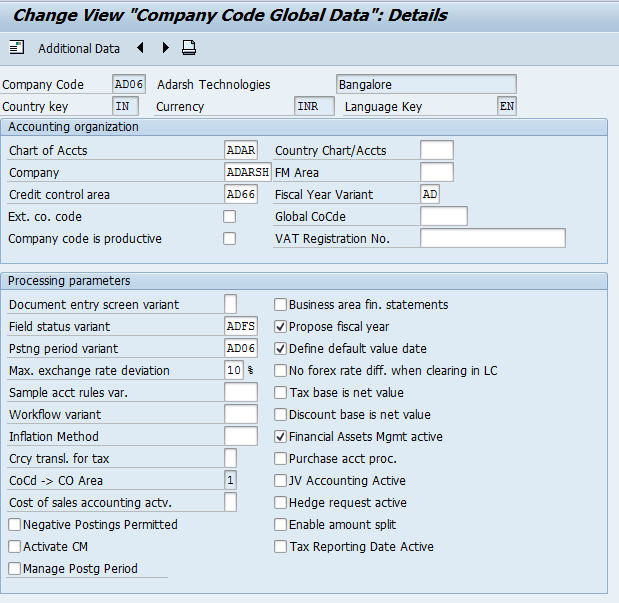Enter Global Parameters
SAP IMG Path : – SPRO -> SAP Reference IMG (F5) -> SAP Customizing Implementation Guide -> Financial Accounting -> Financial Accounting Global Settings -> Company Code -> Enter Global Parameters.
Transaction Code: – OBY6
Double click on your company to enter global parameters
Update the following fields.
> Chart of accounts: – chart of accounts is a list of GL accounts master records that are used by the organization. A chart of accounts must be assigned to each company code and it is defined at the client level.
> Country charts/Accounts:-Enter the country chart of accounts if the company code that you configured has a special country or statutory chart of accounts.
> Company: – Company is the organizational unit for which individual financial statements can be drawn according to the relevant commercial law. A company can comprise one or more company codes and it has local currencies in which its transactions are recorded.
> FM Area: – Enter the Financial management (FM) is key if you are using funds management and it is used for the function of the treasury module.
> Credit Control Area: – Enter your credit control area key for your company code. It controls the credit limits for your customers.
> Fiscal Year variant: – Fiscal year variant is used to define the fiscal year, it contains 12 normal posting periods and 4 special periods. We can define a maximum of 16 posting periods for each year. Special periods are used for Year-end activities.
> Company code is productive:- This setting is applicable for your production client., it is not possible to delete transaction data from the SAP system after you set your company code as productive.
> Vat. Registration no: – Enter vat (value added tax) registration number here.
> Posting period variant: – The Posting Period Variant is used to control which accounting period is to be open for posting and ensuring that closed periods remain balanced and reconciled.
> Propose value data:- Select this indicator to make the current date the default date by the system. The valued date is used for accounts payable, accounts receivable, and treasury transactions.
> Max. Exchange rate deviation: – Enter the maximum exchange rate percentage in which foreign currency transactions can deviate from the rates entered in the exchange rate table.
After updating all the mandatory fields, click on the save icon to save the configured data.


